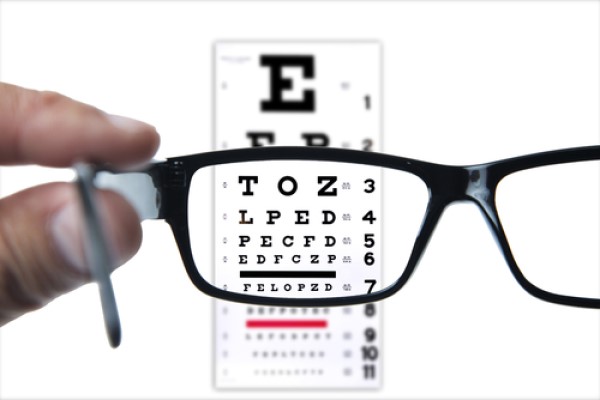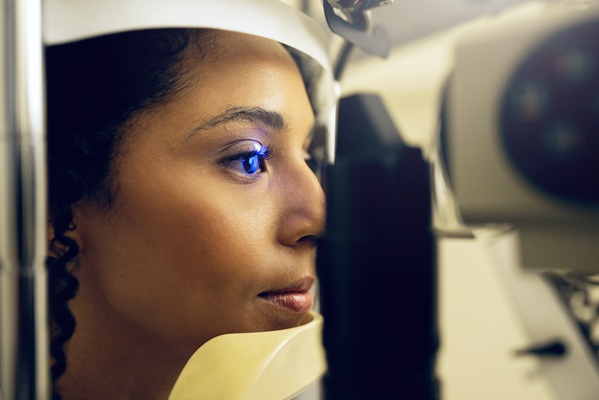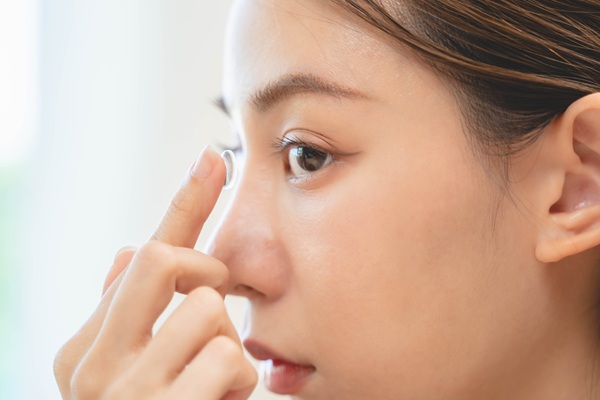How Corrective Lenses Work

The World Health Organization estimates that there are around 253 people around the world that have some form of vision impairment. Many of them have preventable and treatable eye conditions. One of the most effective treatments to improve your vision is to visit an eye doctor and get a prescription for corrective lenses. Even if you have near-perfect vision, you may also benefit from wearing prescription lenses to protect your eyes from blue light from electronic devices and screens. Continue reading to learn more about corrective lenses and how they can benefit your eye health and everyday life.
What are corrective lenses?
A corrective lens is a lens that a person with eyesight issues wears in front of or on their eye. The goal of corrective lenses is to focus light on the retina so the patient can see clearly. Their design allows light rays to bend before they enter the eye at a specific degree.
How corrective lenses work
There are two main types of corrective lenses: convex and concave, plus and minus lenses. There is also a third option known as compound lenses, a combination of convex and concave lenses. The selection will depend on the patient's needs and requires a prescription by a qualified eye doctor, such as an optometrist or ophthalmologist.
Convex
In a convex lens' (sometimes known as a converging lens) the surface bulges outward. It brings in parallel rays of light together and focuses them on a single location or a focal point. As a result, they are thicker in the center and thinner toward the edges.
Convex lenses are often common in devices such as telescopes, binoculars, and magnifying glasses. In optometry, they are used to treat farsightedness.
Concave
In contrast, a concave lens, or diverging lens, curves inward. As a result of their design, parallel waves of light diverge from each other. Optometrists and ophthalmologists typically use these lenses for patients who suffer from nearsightedness.
Types of corrective lens treatment
Glasses
Glasses are a type of corrective lenses a person wears on their face. The glasses sit a short distance in front of their eyes. Some of the most common types of glasses include:
- Monofocal. A mono-focal lens has a singular focal point, allowing the patient to see subjects near or far.
- Bifocal. A bifocal lens divides into two segments. This allows a longer distance on the top of the lens and near vision on the bottom. The patient can see the lines showing the division of sight distance.
- Trifocal. These lenses are similar to bifocals. They correct three vision issues: close, intermediate, and long distance.
- Progressive. These types of lenses offer the same as bifocal and trifocal lenses. However, they provide a smoother transition between focal points and have no visible lines separating the prescriptions.
The specific lens that the patient needs will depend on their prescription. It is important for them to find a lens that suits their vision needs and a lens that they like. For example, some patients do not like the visible line on bifocals or the "image jump" that may come from trifocals.
Contact lenses
Contact lenses are small, bowl-shaped plastic lenses worn directly on the cornea. This placement allows the patient to have a natural view in front of their eyes, with no frames to block parts of their vision. Common types of contact lenses include the following:
- Soft lenses: The CDC states that these lenses are the most common type of contact lenses. They are comfortable and flexible, keeping the patient's eyes hydrated and oxygenated.
- Rigid Gas Permeable (RGP) lenses: RGP lenses are "hard" or unable to bend like soft lenses. They offer a more crisp vision correction and collect less irritating protein deposits.
- Scleral lenses: These are RGP contacts that extend to a larger portion of the eye (sclera). Scleral lenses often help those with corneal abnormalities.
- Hybrid: These contacts combine the benefits of soft lenses and RGPs. The rigid center is surrounded by a soft "skirt" of material. As a result, the lens has the clarity of an RGP lens and the comfort of a soft lens.
Many people prefer to wear contact lenses compared to eyeglasses because of aesthetics, their participation in sports and other physical activities, and the ability to have more natural sight. However, contact lenses require a longer examination period and more follow-ups to maintain quality vision. If applicable, patients will also need to clean the lenses and properly dispose of them.
Call our office today
Corrective lenses can help you see better, even if you have 20/20 vision. They can also protect your eyes from sunlight and blue-light exposure. The first step is to call our office and schedule a consultation. If you have more questions, we would be more than happy to answer them. Take care of your eyes and get started today.
Corrective lens prescriptions are available in Dallas and the surrounding area. To learn more about our services, visit https://www.texasoptical.net or call our office at (214) 771-7333 to schedule an appointment.
Check out what others are saying about our services on Yelp: Read our Yelp reviews.
Recent Posts
For those living with diabetes, undergoing a diabetic eye exam is one of the most important steps in protecting their vision and overall eye health. High blood sugar levels can lead to a range of complications, including conditions that damage the eyes over time. These exams help detect these issues before they become serious, allowing…
Contact lenses provide clear vision and convenience for individuals who prefer an alternative to eyeglasses. However, proper care and maintenance are essential to prevent infections, irritation, and eye damage. Neglecting hygiene practices can lead to serious eye conditions, including corneal ulcers and keratitis. Understanding how to clean, store, and handle contact lenses ensures long-term eye…
Maintaining eye health and preventing long-term issues is the result of consistent and quality vision care. Many people focus on overall wellness but may overlook daily habits that support healthy eyesight. However, taking simple steps each day can protect vision, reduce eye strain, and prevent future complications. By making eye health a priority, it is…
Prescription contacts provide vision correction, comfort, and convenience for those who do not want to wear glasses. However, caring for and wearing contacts takes some getting used to. Learning to insert, remove, and maintain them will help ensure a comfortable and safe experience.Not all contact lenses are the same, and choosing the right pair is…


